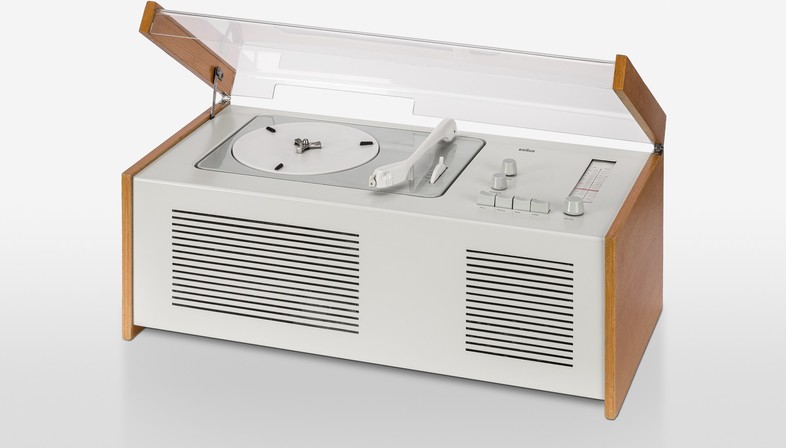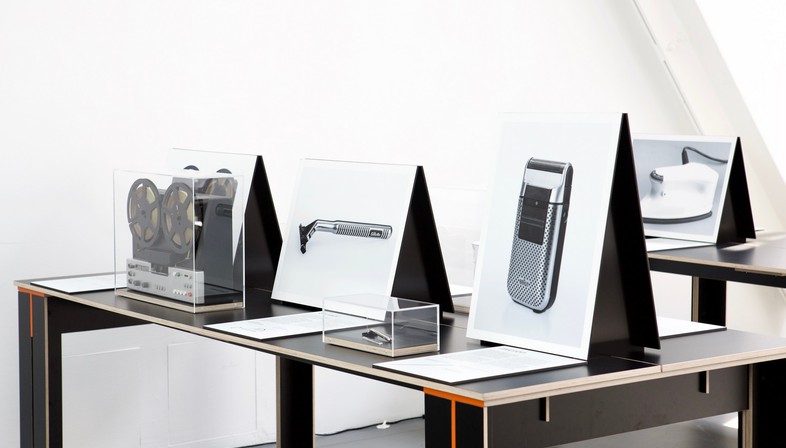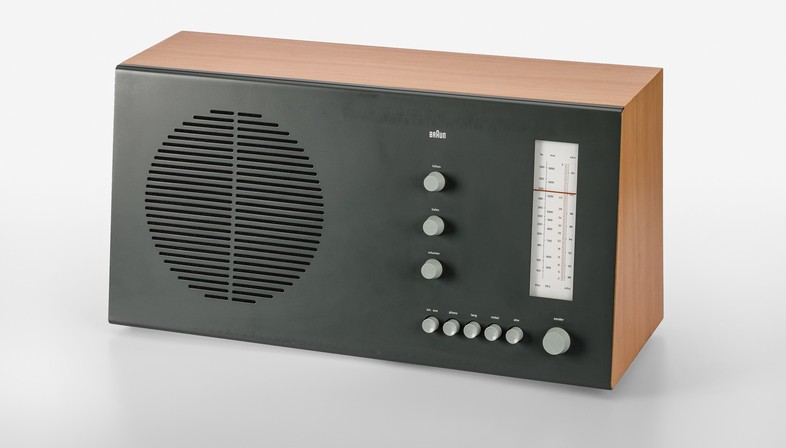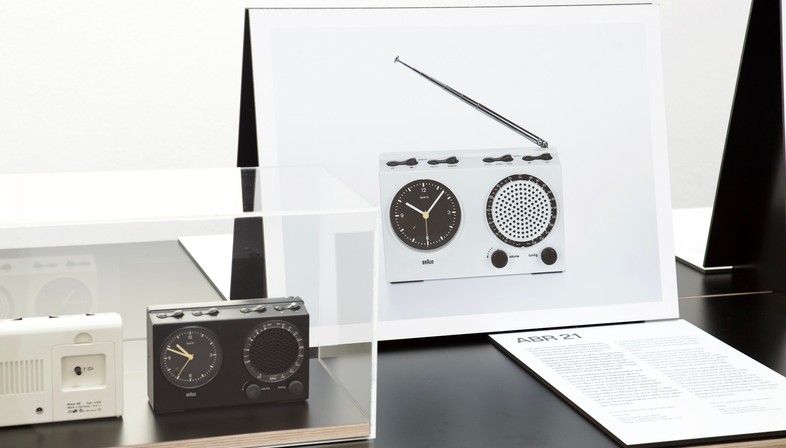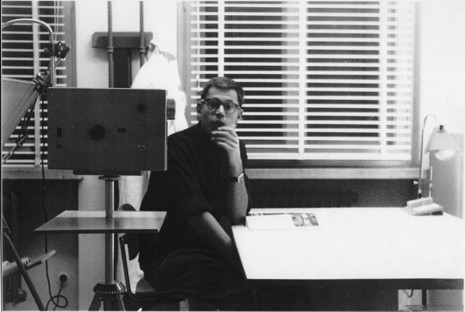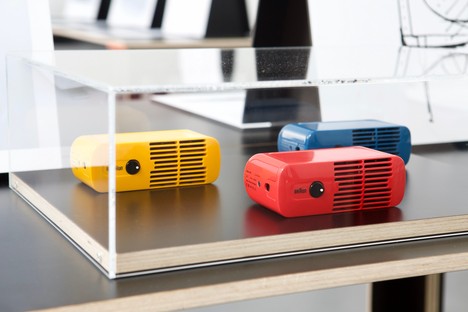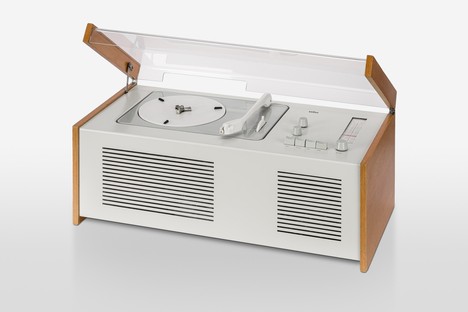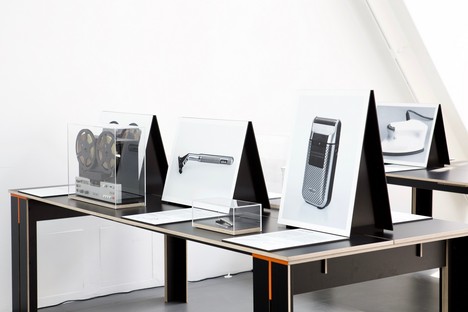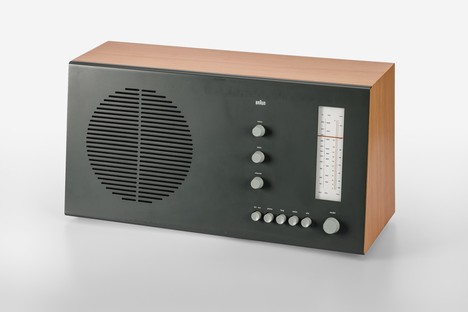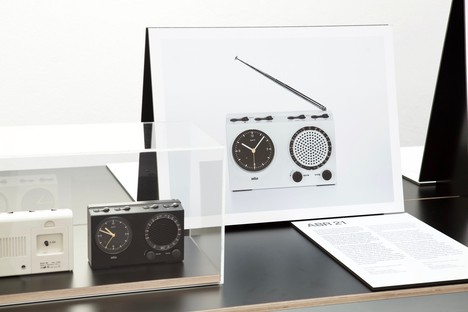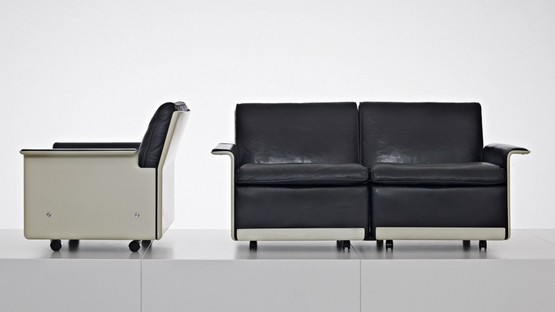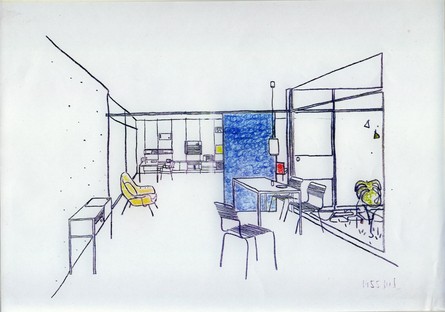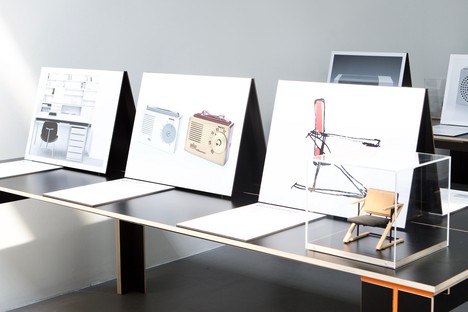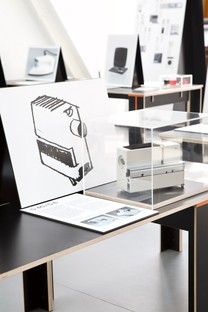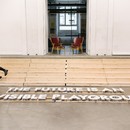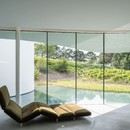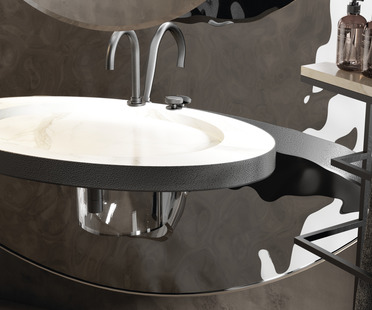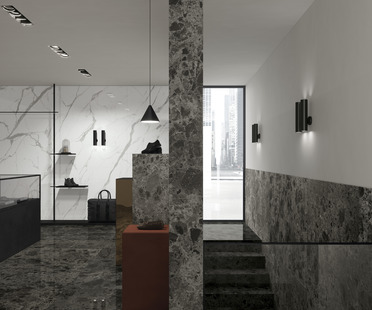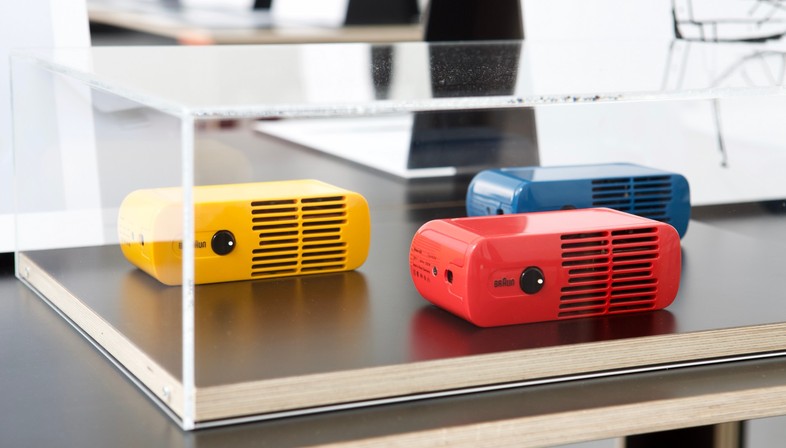
The burning question - what is good design? - seems to be on the lips of renowned German designer Dieter Rams in a slightly out-of-focus photo from 1965, when he was snapped at the Department of Design in Frankfurt, intently absorbed in his research. It is safe to assume, as you wander through the ADI Design Museum amidst the large display tables in the exhibition dedicated to him, in a collection of all the major products of his long and prolific career, that that question was the enigma that accompanied him like a mantra throughout every single day of his journey: potentially the source of much torment, and certainly the reason for his work. Born in 1932, Dieter Rams is a giant of modern and contemporary design, not only in terms of his tireless work (totalling 350 projects) - mainly with two Nordic companies (Braun, based in Germany, and Vitsoe, based in Denmark) - but also in terms of his thinking, which resides at a crucial crossroads between the post-WWII explosion in industrial production and the contemporary world, which he provided (and continues to provide) with a not-insignificant amount of inspiration. ‘Dieter Rams: A Look Back and Ahead’, the small but perfectly-formed exhibition currently on at the ADI Design Museum in Milan celebrates the great man with due sobriety, paring it down to the essentials: his projects and his answers.
The sheer impact of having them all in view at once - and effectively narrated by clear captions, sketches and drawings produced by the designer himself - allows the visitor to truly grasp what Dieter Rams has long pursued: systemic design, capable of improving things from the inside, going against all ideas of formalism and instead focusing on the arrangement of the components related to the use of an object, rather than on attention-seeking aesthetics and form without purpose. Widely-acclaimed examples of this are the famous Braun SK 4 radio-phonograph from 1956 (designed with Hans Gugelot and Gerd A. Muller), or the TP1, a device for listening to music on the go which combined a pocket radio with a miniature record player. This was in 1959, a whole twenty years before the Walkman was ever conceived. The exhibition - born out of the work of the Dieter and Ingeborg Rams Foundation and curated by Klaus Klemp - includes any number of radios, record players, fan heaters, modular furniture systems, chairs, amplifiers, hairdryers, citrus juicers, lighters and razors. But one truly essential feature is Rams’ ten principles for good design, in which he crystallised his method and thinking, and which the School of Design at the Politecnico di Milano - which contributed to the organisation of the exhibition - will present to its students, asking them to add an eleventh.
Perhaps most curious of all to hear the students’ proposals is Rams himself, who has a strong interest in the dilemmas of our time. He demonstrated this with a masterful speech, broadcast during the official opening of the exhibition, in which he emphasised some of the cornerstones of his thinking, firm in his belief that they can provide a useful direction for the future. “Long-term - and therefore sustainable - design is only possible if we focus on the essential,” he said, “and we must always strive to become more keenly aware of the fact that our planet is in the midst of a process of plundering, and that its finite resources and poisoned atmosphere are becoming increasingly obvious. A speech I delivered in Toronto in 1975 has stayed with me all these years. I said: ‘We are in a phase of destruction of the biosphere, and now have an impending fear of poisoning, sickness and suffocation. What do high-voltage towers, skyscrapers, motorways, satellite cities, street lighting, car parks and lifts do to our psyche, to our relationships? Our forefathers would be spinning in their graves if they knew how thoughtlessly we fill our homes, our cities, our landscape with a chaotic jumble of all kinds of things. The days of reckless design - which can only proliferate under reckless production for reckless consumption - are coming to an end, or rather, must come to an end.’”
Returning to the issue of good design, Rams offered a possible answer in his speech for the Milan exhibition: “Product design must provide a significant contribution to the protection of the environment. This involves conserving resources, along with the urgent and necessary minimisation of the physical and visual pollution of our environment. Good design is as little design as possible, tending towards purity and simplicity. The crux of it is this: less and less production that stimulates the desire to buy, fewer objects that have little use, soon to be put aside, thrown away and replaced by new ones. And in their place, more objects that actually are and do what those who buy and use them truly expect from them: a means to facilitate, expand and intensify life.” And in this regard, there is no doubt that Rams is the undisputed master.
Antonella Galli
Dieter Rams. Uno sguardo al passato e al futuro (A Look Back and Ahead)
An exhibition by the Dieter and Ingeborg Rams Foundation, Kronberg i. Ts, curated by Klaus Klemp
In collaboration with the School of Design at the Politecnico di Milano
ADI Design Museum – Compasso d’Oro, Piazza Compasso d’Oro 1, Milan adidesignmuseum.org
Until 11 June 2023
Captions
01 Dieter Rams at the Department of Design in Frankfurt, 1965. Courtesy of the Dieter and Ingeborg Rams Foundation, Kronberg i. Ts
02, Layout of the exhibition, HLD4, Braun travel hairdryer, 1970; photo Martina Bonetti
03 Braun, SK 4 radio-phonograph, 1956, design Hans Gugelot and Dieter Rams, photo Andreas Kugel. Courtesy of the Dieter and Ingeborg Rams Foundation, Kronberg i. Ts
04 Layout of the exhibition, photo Martina Bonetti
05 Braun RT20 table radio, 1961, photo Andreas Kugel. Courtesy of the Dieter and Ingeborg Rams Foundation, Kronberg i. Ts
06, Layout of the exhibition, Braun ABR 2 FM clock radio, 1978, photo Martina Bonetti
07 Vitsoe 620 armchair for the Apple Design Gallery in Berlin, photo Christoph Sagel
08 and 09 Dieter Rams, photos Abisag Tüllmann
10 Sketch by Dieter Rams, 1955, courtesy of ADI Association for Industrial Design
11 Layout of the exhibition, photo Martina Bonetti
12 Layout of the exhibition, Braun D 40 projector, circa 1960, photo Martina Bonetti










